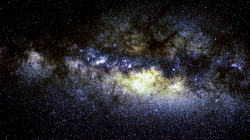The birth of massive stars
During the first stages of massive star evolution, prestellar cores are formed from concentrated gas that collapses to form stars. This phase in massive star formation could not be studied in the past. Wide-field infrared surveys had poor sensitivity, making the identification of starless candidate regions difficult. With the advent of new space and ground telescopes, astrophysicists were able to study in detail the best candidate regions that will eventually form massive stars. The EU-funded project MIRA (Massive star formation with interferometers: Research with ALMA) focused on so-called infrared dark clouds (IRDCs). The physical structure and dynamics of these massive star-forming regions was probed in a broad range of scales down to 0.1 parsecs. Using data obtained at different molecular lines, MIRA scientists also explored chemical variations between the various evolutionary stages. Specifically, IRDCs were observed at high angular resolution using the Submillimeter Array (SMA) and the Atacama Large Millimeter/submillimeter Array (ALMA). The team studied the internal structure of IRDCs showing multiple subclouds traced by their velocity components that have not yet given birth to high-mass stars. They concluded that initially diffuse subclouds are fragmented and that individual cores accrete mass, yielding more and more massive objects. In addition, the cores' chemical complexity increases with time as a consequence of the progressive desorption of the ice mantles of dust grains. MIRA work provides the first complete picture of all evolutionary stages of massive star formation within the same IRDC sample. The results are described in detail in a series of papers on these unique laboratories to study the initial conditions of massive star and star cluster formation.



